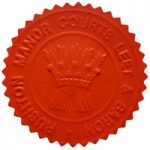The court leet was a historical court in England and Wales. At a very early time in medieval England the Lord of the Manor exercised or claimed certain jurisdictional franchises. The most important of these was the “view of frankpledge” and its associated police jurisdiction. Some time in the later Middle Ages the court baron, when exercising these powers, gained the name of leet, and, later, of court leet. The quo warranto proceedings of Edward I established a sharp distinction between the court baron, exercising strictly manorial rights, and the court leet, depending for its jurisdiction upon royal franchise.
The court leet was a court of record, and its duty was not only to view the pledges but to try by jury, and punish, all crimes committed within the jurisdiction. The steward of the court acted as judge, presiding wholly in a judicial character, the ministerial acts being executed by the bailiff.
The court leet began to decline in the fourteenth century, being superceded by the more modern magistrates’ courts, but in many cases courts leet operated until nearly the middle of the nineteenth century. The courts leet survived for formal purposes until their legal jurisdiction was abolished in 1977. Although they lost their legal jurisdiction, the courts were never formally abolished The Act stated that “Any such court may continue to sit and transact such other business, if any, as was customary for it” and Schedule 4 to the Act specified the business which was to be considered customary, which included the taking of presentments relating to matters of local concern and in some cases the management of common land. Courts may still be found in ceremonial use, for example at Laxton, Bromsgrove, Henley in Arden and of course here in Rushton.
Adapted from Wikipedia

